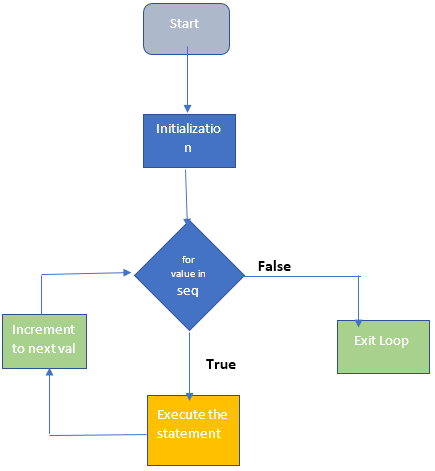

- UNDERSTANDING A FOR LOOP IN R HOW TO
- UNDERSTANDING A FOR LOOP IN R VERIFICATION
- UNDERSTANDING A FOR LOOP IN R CODE
In other languages, you may find the (slightly confusing) equivalent called “continue”, which means the same: wherever you are, upon the verification of the condition, jump to the evaluation of the loop.Example of ‘next’ in R codem=5 for (k in 1:m) 1 3 5‘If then else’An if-else statement is a very powerful tool to return output based on a condition. In the end, the program prints the counter ‘ctr', which contains the number of elements that were assigned.Use of ‘next’ in loops‘next’ also discontinues a particular iteration and shift to the next cycle of operation. If the indexes differ, the assignment is performed and the counter is incremented by 1. Then, control gets to the outer for condition (over the rows, index ‘i’), which is evaluated again. When the indexes are equal and thus the condition in the inner loop, which runs over the column index ‘j’ is fulfilled, a ‘break’ command is executed and the innermost loop is interrupted with a direct jump to the instruction following the inner loop. The others are left untouched to their initialized zero value. The purpose was to create a lower triangular matrix, that is a matrix whose elements below the main diagonal are non-zero.
UNDERSTANDING A FOR LOOP IN R CODE
Sometimes, rather than breaking out of the loop we just want to skip the rest of the current iteration and start the next iteration: x j mat = i*j ctr=ctr+1 } } print(i*j) } # Result 1 4 9 16 25 # Print how many matrix cell were assigned print(ctr) #Result 10The above code snippet defines an m x n (5 x 5) matrix of zeros and then enters a nested for loop to fill the locations of the matrix, but only if the two indexes differ. In general, we want our code to complete before the end of the world so that it is possible to break out of the infinite loop by including a break statement. In other languages, it often goes by the name do while, or something similar. All it does is execute the same code over and over again until you ask it to stop. In R, there are 3 types of loops: ‘repeat’, ‘while’ and ‘for’. ‘repeat’ LoopsThe easiest loop among the 3. This violates the DRY principle, known in every programming language: Don’t Repeat Yourself, at all cost.R Programming Tutorial By KnowledgeHut “Looping”/“Cycling”/“Iterating” is a very helpful way to automate a multi-step process by organizing sequences of activities by grouping the parts that need to be repeated. You immediately see this is rather tedious: you repeat the same code chunk over and over. You can do this as follows: print(paste("The year is", 2010)) Suppose you want to do several printouts of the following form: The year is where is equal to 2010, 2011, up to 2015. Let’s get back to the conceptual meaning of a loop. If you want to learn more on the concepts of vectorization in R, this is a good read.
UNDERSTANDING A FOR LOOP IN R HOW TO
Nevertheless, as a beginner in R, it is good to have a basic understanding of loops and how to write them.

For example, solutions that make use of loops are less efficient than vectorized solutions that make use of apply functions, such as lapply and sapply. Simply put, this allows for much faster calculations. Why? Well, that’s because R supports vectorization. When surfing on the web you’ll often read that one should avoid making use of loops in R. Sounds weird? No worries, it will become more clear once we start working with some examples below.īefore you dive into writing loops in R, there is one important thing you should know. They allow you to automate parts of your code that are in need of repetition. It is aimed at beginners, and if you’re not yet familiar with the basic syntax of the R language we recommend you to first have a look at this introductory R tutorial.Ĭonceptually, a loop is a way to repeat a sequence of instructions under certain conditions.

In this tutorial we will have a look at how you can write a basic for loop in R.


 0 kommentar(er)
0 kommentar(er)
